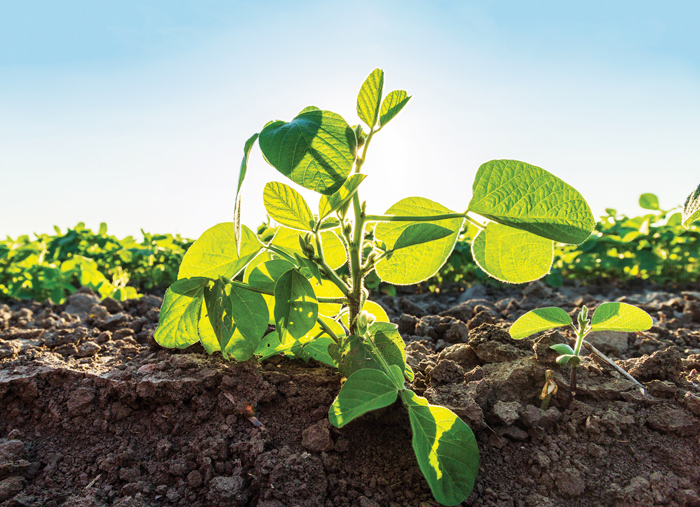January 2023
| DR JAN DREYER, AGRONOMIST, PROTEIN RESEARCH FOUNDATION |
 |
Soybean production has only come to the fore in the last decade. Production increased from slightly over 500 000 ton per year in 2012 to more or less 2 million tons in 2022. It has the potential to spread the risk of crop failure. It creates agronomic advantages and can also earn a farmer a good income.
South Africa’s dryland crop production in the summer rainfall area is dominated by maize production. There is little doubt that maize as anchor crop serves our country well by supplying food and feed for humans, animals and as raw material for the industry. Production practices for maize is well known, thus the relative stability in yield.
Soybean production is worth considering as an alternative for maize on a part of the farm. Add to this the ‘kick-up’ effect of maize yields planted after soybeans in a crop rotation system. In most cases, the maize yield will increase with 10% or more if it is planted after soybeans. Price differentials may also favour soybean cultivation. Also consider the fact that almost no nitrogen (N) fertiliser is needed. Soils and a climate that favour maize production, will in most cases be the same for soybeans.
FACTORS TO CONSIDER
The following factors should be taken into account before planting soybeans:
Soil requirements
Cultivar selection
Inoculation of seed
This is by far the most important operation for the successful cultivation of soybeans. Take note that a farmer can save more than 60 kg of N for every ton of soybeans produced if inoculation is done properly.
Biological nitrogen fixation (BNF) is only possible with successful inoculation with Rhizobium-bacteria. This process started with the mixing of the right Rhizobium strain with soybean seed and if possible, also Rhizobium in suspension in the planting furrow. Seed should be moistened with a wetting agent.
Handle the inoculant with care, store in a cool place and keep it out of direct sunlight during mixing. Successful BNF will ensure enough N for a good crop.
The planting of soybeans should be done as soon as the mixing of the seed is done. Never leave the inoculated seed for the next day, except where the inoculum is pre-treated to allow for longer retention periods. Make sure you follow the instructions.
All other nutrients should be applied as needed. Molybdenum is essential for effective N-fixation. Therefore, it should be applied as a micronutrient.
Keep in mind that soybeans require 6 kg to 9 kg P and more than 20 kg of K per ton of grain. Sulphur (S) may also be in short supply. At least 2 kg of S is removed for every ton of grain produced. A soil analysis will give a good guideline for a fertiliser recommendation.

Ripe soybean pods.
Planting date
Irrespective of other considerations, never plant in dry soil. Soybeans take up 50% of its seed weight before germination, but for maize it’s only half this amount.
Weather conditions will be the driving force, but where possible, early planting with the right cultivar will yield the best. Sclerotinia stalk rot is also more prevalent with late plantings, especially when it’s cold and wet during flowering.
Avoid crust formation in the first week after planting. Keep the crop fields free of weeds, pests and diseases as far as possible.
Like maize, soybeans are also more sensitive to adverse conditions during the reproductive stage. Fortunately soybeans stay longer at this stage, thus it could cope with such conditions a little longer than maize. The crop can also cope better with waterlogged conditions than maize.
Harvesting
The last crucial part of the soybean production process is harvesting. If the fields are too big for hand harvesting, a combine is needed. Make sure that you have access to such a machine at harvest time. Soybeans will shutter after the R8 stage, when 95% of the pods turn brown.
Publication: January 2023
Section: Pula/Imvula